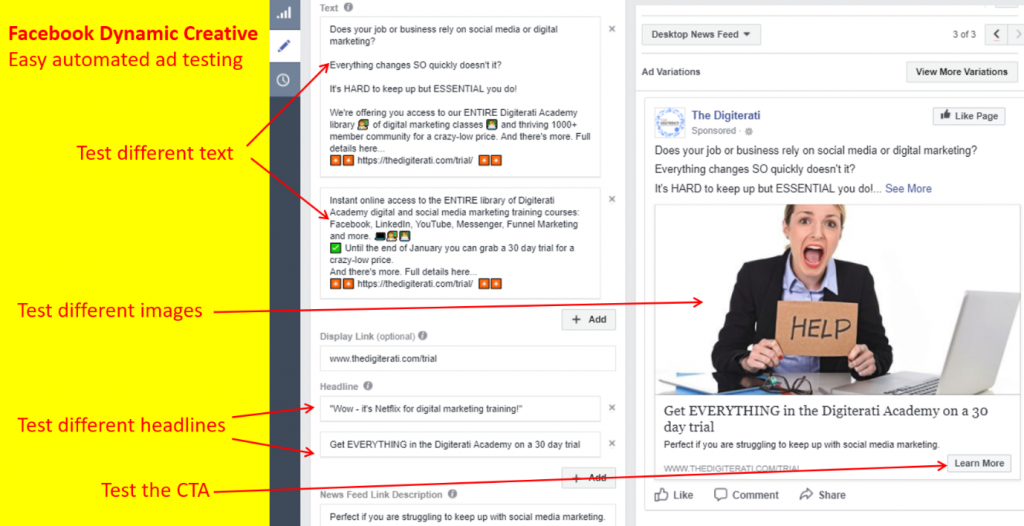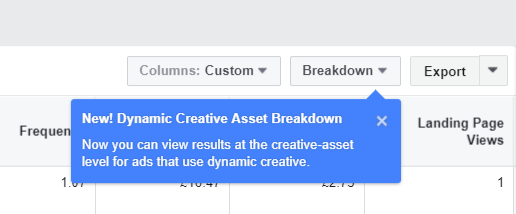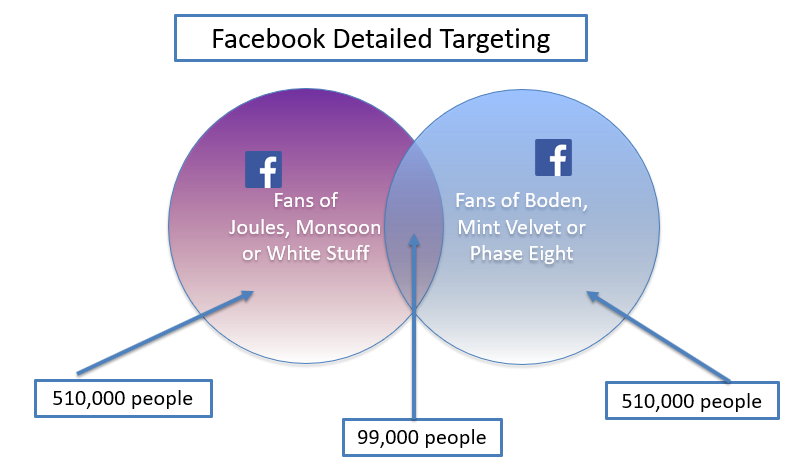So many small business social media marketers are massively disappointed in Facebook.
Disappointed because they can’t reach more than a tiny percentage of their fans without paying for boosts.
Disappointed because when they finally relent and try some advertising their ad campaigns never seem to convert in the numbers they were hoping for.
Why might this be?
With so much of our news feed featuring ads might it be that many people are simply ad blind now unless they come across some super creative or one-in-a-million viral approach?
I think that’s doubtful. We see case studies all the time of businesses that are making money from Facebook ads. Look at Mahabis who built a slipper empire on the back of relentless Facebook ads for funky, overpriced footwear. Not all those millions of dollars lining the Facebook shareholder’s pockets have been spent in vain. Some companies see good return on investment. So why are you struggling so much?
It’s just possible that the problem isn’t Facebook, and the problem isn’t the people seeing your ads, the problem is a little closer to home. The problem is with you and the way you put your campaigns together.
I’ve been creating an online course in recent weeks – we are calling it ‘Zero to Hero with Facebook Ads’. I share that not as a backdoor promotion on Social Media Examiner but to illustrate how much I want to unlock the potential of Facebook advertising for social media marketers who are overwhelmed with disappointment with their efforts to date.
Many advertisers are veritable Ads Manager ninjas but are still not getting the results they would like. It’s not that they don’t know how to use the platform, it’s something else that is at fault.
And unpacking that something else can be quite the challenge. There are so many variables at work here. Let’s look at a few of them.
Mistake # 1 You are targeting the wrong people
I’ll bet that you are setting up your Facebook campaigns to target total strangers to your business. The Ads Manager wizard guides you step-by-step in creating ads and part of that process is completing the Detailed Targeting box.

You add in a slew of interests and behaviours and instantly your mindset is focussed on new customers, people you’ve never met before but do at least fit the profile of the ideal persona.
And this kind of targeting is what we’ve all been taught as marketers. Define your ideal customer, create a persona and target your ads at them.
However, this targeting is to a totally cold audience (and your ad copy may well be aimed at people much further down the funnel). Why take the difficult road when there is an easier path?
Your targeting priority should be your low hanging fruit. I know that’s a cliché that probably belongs locked in the box where you keep ‘Blue Sky Thinking’ but it is worth revisiting when you are looking at spending a small fortune on Facebook ads.
Target people you know are interested in you. Target THEM with your offers and trials.
And who might they be? Well take a look at this list:
- Your existing customers
- People that recently responded to a lead magnet
- Your mailing list (that you’ve honed and kept warm with lots of lovely informative newsletters)
- People that have clicked on your ads or watched your videos
- People that have been clicking around your website or spending time on a particular page
- They might also be your Facebook fans (but do be aware that many Pages have a legacy of dodgy fan acquisition practice – read buying fans and those lured by competitions – or simply a fan based that was acquired many years ago and now is pretty stale.)
These are your low hanging fruit. They know who you are, they like what you do and they will be open to offers.
Only then should you be focusing on ad campaigns that target cold audiences (whether lookalikes or those you find via targeting).

Mistake #2 You are targeting the right people with the wrong message
I’d put money on you targeting people that could well be the perfect customer one day in the future with totally the wrong ad for the stage they are currently in the customer journey.
Your ads aren’t converting because your ad copy that is better suited for people much further down the marketing funnel.
You are effectively making a marriage proposal on a first date.
So what should you do?
It may take a series of ads but it’s an approach that works. Use a funnel marketing approach that segments people by stage in the customer journey and serves them ads according to where they are.

Facebook’s Campaign Objectives support this approach with three distinct categories:
- Awareness – for a cold audience that probably don’t even know who you are (or for re-engaging an audience that you haven’t talked to in a while)
- Consideration – for a warm audience, aware of who you are, who might like a little more information but are not yet going to be in a frame of mind to buy
- Conversion – for a hot audience who are positively disposed towards you and are ready to buy
The ads that you design for a cold audience will be entirely different to those for a warm or hot audience.

The TOFU, MOFU and BOFU model is also relevant. Funnel marketing theory is closely aligned with that of the customer journey. You take people through the funnel to conversion at the bottom:
- Top of the Funnel – Brand awareness – we exist, we have interesting content that addresses your pain points
That content may well have been what drew people to find you in the first place – web searches led them to a blog post, an interest-targeted ad on Facebook popped up in their news feed at just the right time. Content is educational and entertaining and emphasises your expertise in the problems your target is facing.
In terms of ads you are selling the brand, not a product. Free guides, whitepapers, checklists, informative articles and videos work well. Many of these will be delivered via read and lead magnets which are likely to be found via ads or search. - Middle of the Funnel – we have a solution to your pain points but we’re not going to hard sell it to you right now
Potential buyers are in evaluation mode – figuring out what to do about their problems and interested in stories about people who share their pain (and overcame it), in articles that examine the issues they are wrestling with and teach people how to choose a solution.
Ads should drive connection and commitment while building trust in your brand. Content types might include webinars, buying guides and spec sheets.
- Bottom of the Funnel – folks are ready to buy and just need that perfect offer, a free trial, a webinar, an online chat. This is the point where ads should start to become more ‘salesy’, more like, well ‘ads’. They need to offer discounts wrapped around urgency and scarcity messages to push the conversion. Case studies and testimonials work well which demonstrate the value of your product
It shouldn’t take a major leap for you to look at that TOFU, MOFU and BOFU model and match up your own ad campaigns with it. Have you been plying TOFUs and MOFUs with offers and wondering why they aren’t converting?
Marketing communications is a process. People rarely convert the first time they see an ad. The solution is rarely to keep showing them the same ad time and again. The trick is to show them an ad that is at the right stage of the customer journey for them. When they have engaged with that content (watched the video, gone to the blog post, signed up for your lead magnet) then you can start warming them up with the next set of ads.
Mistake #3 Your sales pitch is coming in too soon
Go look at your News Feed now. Count how many ads are pushing a sales pitch at you. Brands that you’ve never heard of, brands that you have never engaged with. Are you responding? Probably not (unless you’d been worn down by all those Mahabi ads which is more a frequency game than funnel marketing).
Save your sales pitch for re-targeting ads. These won’t cost you anything like the amount that reaching a cold audience will, because the numbers you re-target are so much smaller.
Here you are showing a very specific ad to a very specific person – an ad about XX because they have been on a web page talking about that exact product. Or they’ve already clicked on an ad that was profiling that product or a problem associated with it.
Mistake #4 You are targeting the right people with the wrong ad types
You have some fantastic video content on your website or Facebook Page and people are responding to it. You decide to re-target them with an ad. But you use static images in the ad, or a click to website ad.
You know this target audience have responded to video once, so why aren’t you serving them up a video ad? It’s really not rocket science.
Mistake #5 You are ignoring your poor relevance scores
Facebook is really keen that our ads are as relevant to our target audience as possible. It rewards advertisers that get it right by showing their ads to more people and charging them less.
You need to aim for high relevance scores.
AdEspresso experimented with identical ads to different audiences and found that they spent:
- $0.142 per website click for an ad with a score of 2.9
- $0.03 per website click for the exact same ad but target to a website custom audience from users who had recently visited their website. This SAME ad was given a relevance score of 8.0
(https://adespresso.com/blog/facebook-ads-relevance-score/)
Tighter targeting is a surefire way of improving relevance scores as are impactful images, clear calls to action in the copy or a CTA button. Lower ads frequency will also help as well as ads that are designed with your target market in mind – Facebook rewards conversions too.
Mistake #6 You are not testing your ads
Ad testing used to be a pretty time-consuming practice on Facebook but with split testing now the norm and the Dynamic Creative option available to test different combinations of creative assets (images, headlines, description, cta etc) there really is no excuse not to be testing and then stopping using assets that are not working.



You may love the image you are using of the cute dog but your potential customers may find it a total turn off. Testing will quickly show you what is working.
Mistake #7 Your targeting is too broad
OK, so despite my recommendations to target low hanging fruit and then re-targeting from there you are still intent on interest and behavioural targeting. I know – it’s tempting.
But at least if you are doing that then use the Detailed Targeting tool to it’s full potential. Rather than build interest lists that simply grow and grow with each new interest added, use the Detailed Targeting tool to NARROW your market and in so doing reach fewer people but reach those who are much more likely to convert.
Here’s how Detailed Targeting works when I am targeting women who like a combination of British fashion brands.

Detailed targeting lets me use ‘Boolein’ logic so I build a target of women who like either Joules or Monsoon or Whitestuff then build a list of women who like Boden, Mint Velvet or Phase Eight. I then state that my targeting needs to match at least one from each list. Like that I reduce my target market from over a million (these are the people that like any one of those 6 brands) to just 99,000 people who like two of them. These are much more likely to be in the target market I have in mind of women likely to buy classy, fashionable mid-priced clothing.

Mistake #8 Your landing page is all wrong
You may have made the perfect ad but if your landing page is off, you’ll lose that conversion. Landing pages need to have considerable congruency with the ad so images, copy, look, feel and tone need to be the same or similar.
The landing page needs to include social proof, counter any objections, be easy to skim with clear and concise headlines and friendly body copy that is free from errors. Trust indicators need to be shown, the call to action needs to be stand out and be highly visible and likely repeated throughout the page. In fact everything should be leading to that action – it is the sole objective of your page.
Remember too to minimise links on the landing page. You want people to click on the call to action button rather than be tempted elsewhere on your website (or worse still, to another website due to those Google ads you have lurking on the page).
Conclusion
How many of those 8 mistakes have you ‘fessed up to? I’ve made each and every mistake in my time as a Facebook advertiser. I’ve learned the hard way – the way that cost me lots of ad budget and yielded little return.
The tools are there to use. The targeting capacity of Facebook is awesome but it is so easy to get fixated on the lure of finding brand new customers rather than working with what we’ve got and maximising the potential of those warm leads.
I go into how to do Facebook ads the right way on my new Zero to Hero with Facebook Ads course. You can find it over in the Digiterati Academy.
- Updated 30 April 2020: Which video conferencing or live streaming platform to choose? - 4th April 2020
- Free Webinar: Moving your activity classes online #StayInWorkOut - 27th March 2020
- How to move face-to-face classes online - 17th March 2020
- Facebook Ad Campaign Structure - 1st October 2019
- BrightonSEO talk: How to get Facebook Groups Working for Your Business - 4th September 2019
- Case study: SEO for a website that was virtually invisible on Google - 20th August 2019
